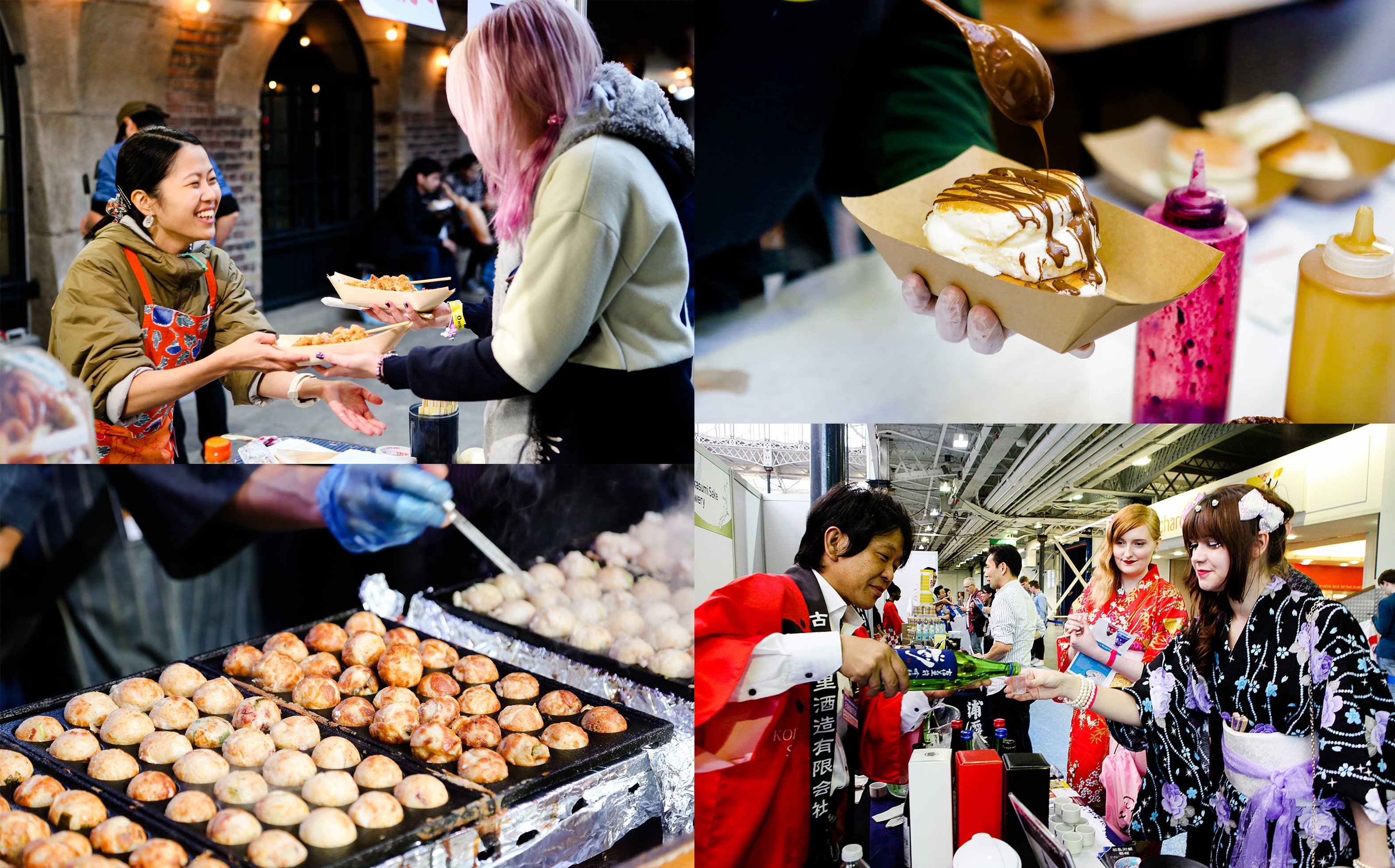
This year’s Hyper Japan event, held on 16-18 November at Olympia, London, celebrated a wide range of Japanese culture, from the rarest of sakes to the brightest of anime-theme sweets, via some excellent costumes – including one man dressed as Godzilla. In few other contexts would you queue for ramen behind Hello Kitty.
 Hyper Japan was more than quirk and colour, though: it demonstrated the firm push of Japanese cuisine into western markets beyond the ubiquity of British-run companies like Wagamama. A number of brands, particularly in the sake industry, were showcasing in London for the first time at the event.
Hyper Japan was more than quirk and colour, though: it demonstrated the firm push of Japanese cuisine into western markets beyond the ubiquity of British-run companies like Wagamama. A number of brands, particularly in the sake industry, were showcasing in London for the first time at the event.
From luxury wagyu to everyday matcha
Some luxury foodstuffs from Japan have entered into high-end restaurant fare in recent years, the richly marbled wagyu beef a case in point. At Hyper Japan, it was on offer at a street food stall. As more and more customers become aware of produce like wagyu beef – and equally of flavours like matcha, red bean, or yuzu – we can expect to see more of traditionally eastern food in everyday fare in the west.
Increasingly, Japanese brands – notably breweries and distilleries – are seeking to develop a reputation for high-quality but accessible produce. To do so, they’ve looked to western tastes for an idea of how traditional Japanese fare might translate across oceans.
Hyper Japan ran a sake tasting experience alongside the main event, which showcased some of the country’s best – and newest – forms of sake and liquor. It was there that I discovered sparkling sake, a relatively recent development that was fuelled at least in part by a push to bring Japanese spirits to a wider global market. Made bubbly by fermenting yeast in the bottle, like champagne, it can be a subtly sweet drink that has (as expected) appealed to both sake connoisseurs and newbies across the market.
Meeting mainstream demand
A lot of the products being rolled out to new markets are equally popular at home. The citrusy yuzu is used in everything from sweets to liquor, and the latter is especially taking off in new markets as mainstream demand for authentic produce grows. The brewery Takara Shuzo, which was exhibiting at Hyper Japan, explained that their Kyo Yuzu drink – a cloudy citrus liquor – was hugely popular with new customers, but also has many fans in Japan.
There is still plenty that western consumers have yet to get to know, but brands like Kitaya Wagashi (a family-run business making rice-based wagashi sweets) aim to pique interest in their produce by offering a balance of flavours. Offering sweets in vanilla, chocolate and coffee flavours alongside matcha and red bean show a move into tastes that are familiar with westerners while still showcasing traditional produce.
Like Hokusai’s wave, the flow of Japanese cuisine into new markets is powerful but delicate, made up of its best examples of fine food and drink. There are still quirks in Japanese food trends that haven’t taken off in Europe or America as yet – katsu ika odori don, otherwise known as ‘dancing squid’, for example. But if HyperJapan is anything to go by, products coming out of artisanal and mainstream brands alike will keep appealing to customers across new markets.
Frances Ball




